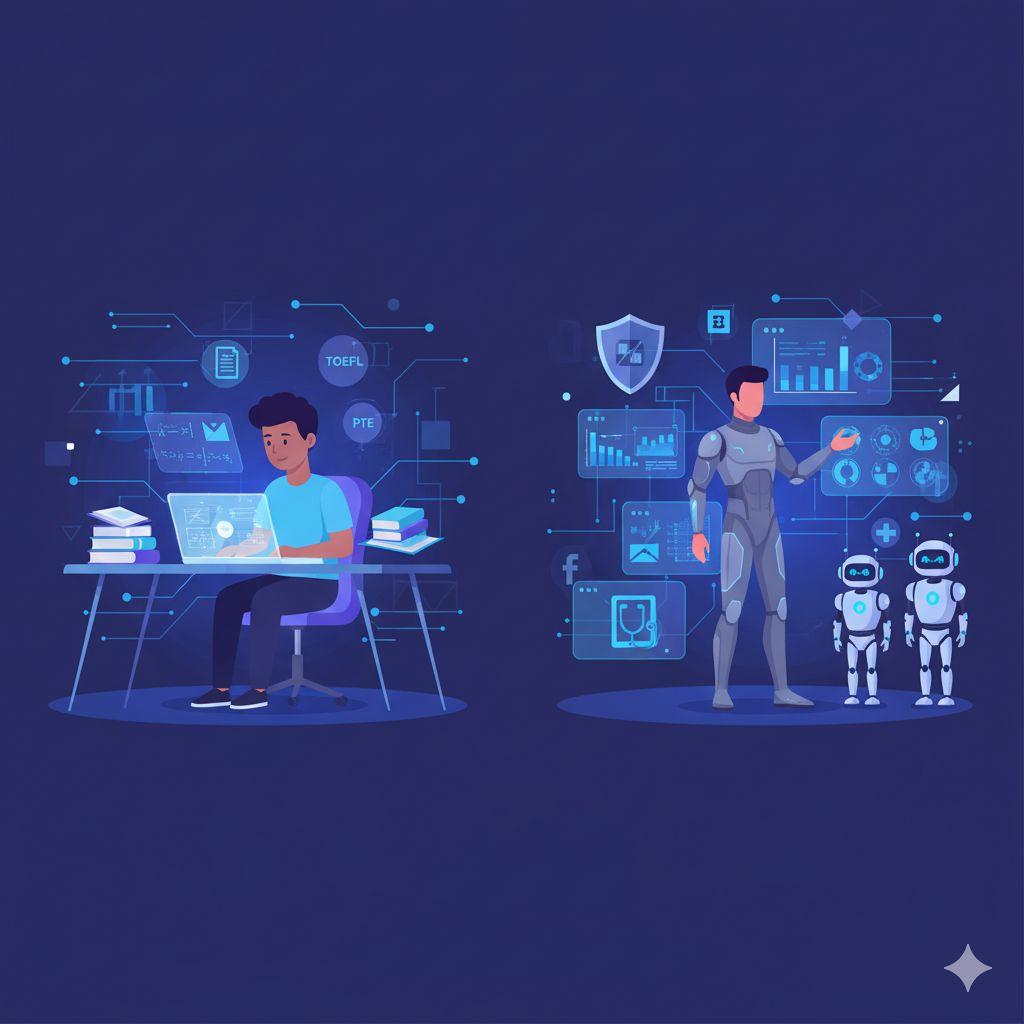
Technology is one of the most frequent topics in IELTS, TOEFL, and PTE exams, appearing in Writing Task 2 essays, Speaking discussions, and even Listening passages. To achieve a higher band score, candidates must use accurate and natural technology collocations rather than simple words. This post brings you a comprehensive list of collocations related to technology, supported by practical exercises and activities to help you enhance vocabulary, fluency, and confidence in both Writing and Speaking tasks.
Technology
Impact of social media
- online presence → A professional online presence helps graduates find jobs.
- virtual communities → Virtual communities connect people with niche interests worldwide.
- digital influencers → Digital influencers shape trends among younger consumers.
- cyberbullying cases → Schools must address cyberbullying cases promptly and effectively.
- fake news circulation → Fake news circulation undermines trust in mainstream media.
- privacy concerns → Privacy concerns push platforms to strengthen user controls.
- addictive behavior → Design features can encourage addictive behavior in some users.
- social networking platforms → Social networking platforms enable rapid information sharing.
- online harassment → Victims of online harassment need simple reporting mechanisms.
- digital footprint → Students should manage their digital footprint from an early age.
Artificial intelligence and automation
- machine learning algorithms → Machine learning algorithms power many recommendation systems.
- autonomous vehicles → Autonomous vehicles could change urban transport in coming decades.
- smart devices → Smart devices gather data to improve user convenience.
- workplace automation → Workplace automation increases efficiency but can displace routine jobs.
- technological disruption → Technological disruption forces industries to retrain their workforces.
- ethical concerns → Ethical concerns about AI include bias and lack of transparency.
- robotics industry → The robotics industry is expanding into healthcare and logistics.
- human-AI collaboration → Human-AI collaboration often produces better outcomes than machines alone.
- unemployment risks → Automation raises unemployment risks for routine manual occupations.
- advanced computing → Advanced computing enables large-scale data analysis for research.
Privacy and data security
- personal information leakage → Firms must prevent personal information leakage with strong security.
- cybersecurity threats → Cybersecurity threats pose risks to national infrastructure.
- identity theft → Victims of identity theft often face a lengthy recovery process.
- data encryption → Data encryption protects sensitive information in transit and storage.
- unauthorized access → Unauthorized access to systems can harm customers and reputations.
- online fraud → Banks invest heavily to detect and prevent online fraud.
- strict regulations → Strict regulations like data protection laws shape corporate practices.
- data protection laws → Data protection laws require clear user consent before processing data.
- surveillance systems → Widespread surveillance systems raise privacy and civil liberty concerns.
- user consent → Obtaining explicit user consent is essential for lawful data usage.
Technology in education and healthcare
- e-learning platforms → Universities use e-learning platforms for hybrid courses.
- online assessment tools → Online assessment tools allow rapid, automated feedback to students.
- digital healthcare → Digital healthcare includes telemedicine and health tracking apps.
- telemedicine services → Telemedicine services expanded access in remote communities.
- electronic records → Electronic records speed up referrals between doctors.
- health monitoring apps → Health monitoring apps help patients manage chronic illnesses.
- assistive technologies → Assistive technologies enable access for students with disabilities.
- AI diagnosis systems → AI diagnosis systems support clinicians but require careful validation.
- medical databases → Medical databases support epidemiological research and policy.
- educational apps → Educational apps make language learning interactive for young learners.

